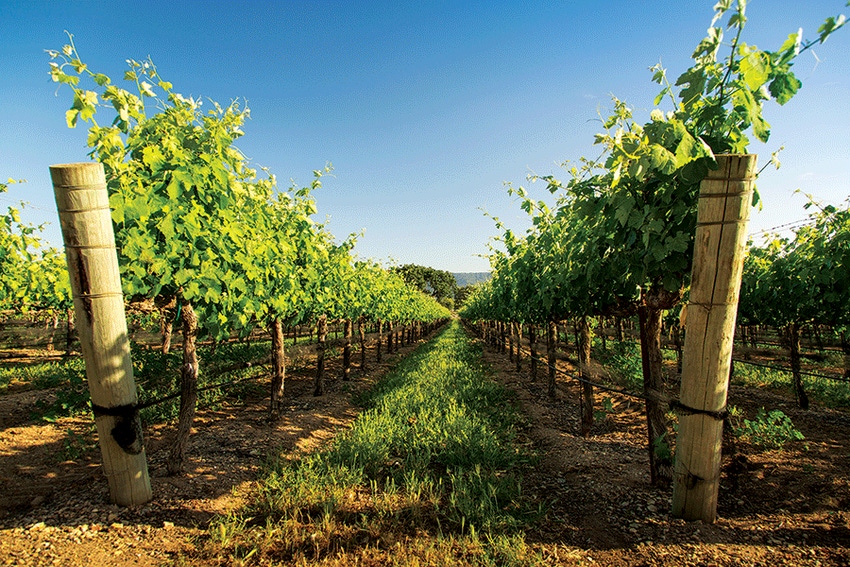
A few years ago, University of California viticulture and pest management advisors noticed unusual leaf symptoms in certain Napa County hillside vineyards that were right next to oak woodlands.
As described by the UC Cooperative Extension’s Monica Cooper and Lucia Varela, the feeding activity they noted in April 2015 resulted in a “lace-like” appearance to damaged leaves. Then last year, in March, they observed feeding damage to expanding buds.
The insect associated with this damage was the arboreal camel cricket (Gammarotettix bilobatus), found in North America and abundant in California. According to non-profit research publishing firm BioOne, it emerges mid- to late February, survives into late May and early June; host plants include coast live oak, Christmas berry, and Monterey pine. Researchers say the cricket appears to switch host plants intra-seasonally, and can even act as an inadvertent pollinator of some of its host plants.
Where vineyards have come into play is when they were situated on hillsides next to oak woodlands and mixed species of white alders, madrone, California bay, and Douglas fir, according to Varela, a north coast integrated pest management advisor, and Rhonda Smith, a UCCE viticulture advisor.
ADULTS CAUSE DAMAGE
Arboreal camel crickets feeding on leaves cause numerous holes, resulting in leaves that appear “lace-like” because of the thread-like remnants of leaf tissue in many of the holes they leave behind, Varela and Smith note in an online guide to chewing pests posted by UCCE Sonoma County.
Continuous feeding on a single leaf can result in a blade consisting only of tissue surrounding the main veins and numerous holes throughout any remaining tissue.
It’s the adult cricket that feeds and causes the damage, they note. Adults don’t have wings; rather, they have powerful muscles on their rear legs that make them strong jumpers. Their bodies are somewhat humpbacked, and brownish with variable black markings. According to literature, they pests have so far only been reported as occurring in the north coast region.
The crickets have one generation per year, with adults appearing in April and being gone by July. In vineyards, they can be seen during the day feeding on the underside of basal leaves or resting at the base of the shoot or on the spur.
Their coloration blends with that of the spur or cane, making them harder to see, but when disturbed they readily jump to the ground. As with other crickets, they are active at night.
IMPACT OF DROUGHT
While grapes aren’t recognized as a major host for arboreal camel crickets, vineyards surrounded by suitable cricket habitat can experience some damage every year, the UCCE advises. The pest may have become more widespread in recent years as drought conditions have persisted in their arboreal range, researchers say.
The crickets are among numerous chewing pests that vineyardists have to watch for each year, since they can cause damage to buds and young shoots in grapevines. Others include European earwigs, cutworms, humped green fruitworms, and various piercing and sucking insects, according to the UCCE Sonoma County guide.
Smith and Varela say they’ve been getting numerous calls and photos of insect damage of buds and emerging shoots, with damage often including a hole or a depression in an unopened bud; holes of various sizes inside the margins of a leaf blade; leaves that are misshapen because of marginal feeding; or young shoots that are missing a shoot tip or entire leaf blades.
Companies market various pesticides and traps to deal with the pests. However, arboreal camel crickets are usually not a problem in the vineyard unless they move into adjacent vines early and feed on buds, Smith and Varela note. Vines generally outgrow early-spring leaf injury.
To view the guide, go to https://bit.ly/2KnXIpG
About the Author(s)
You May Also Like






